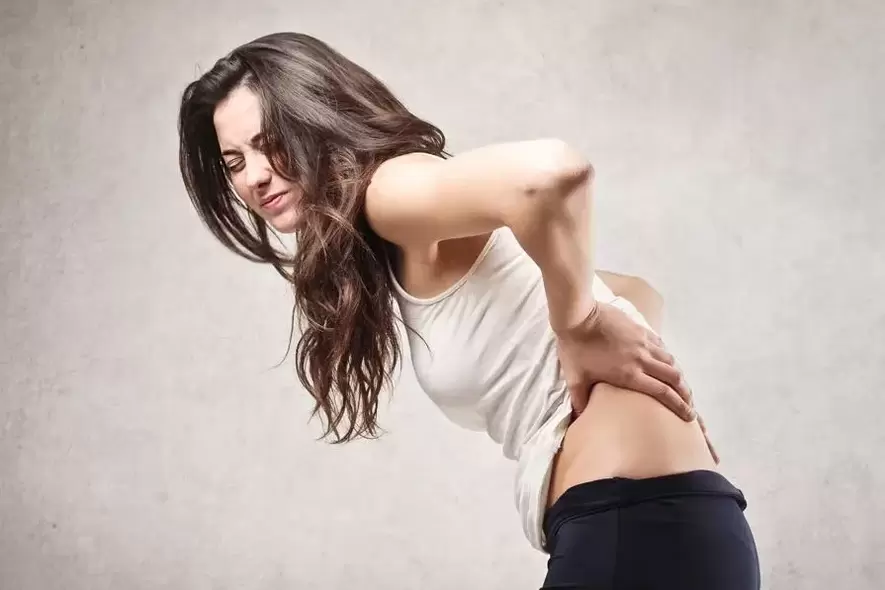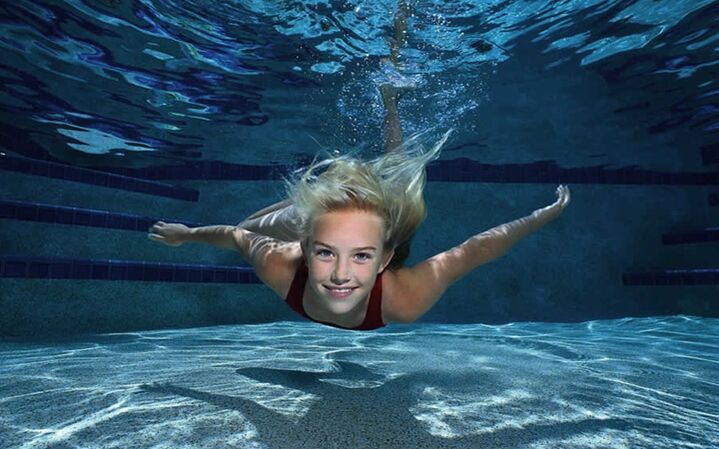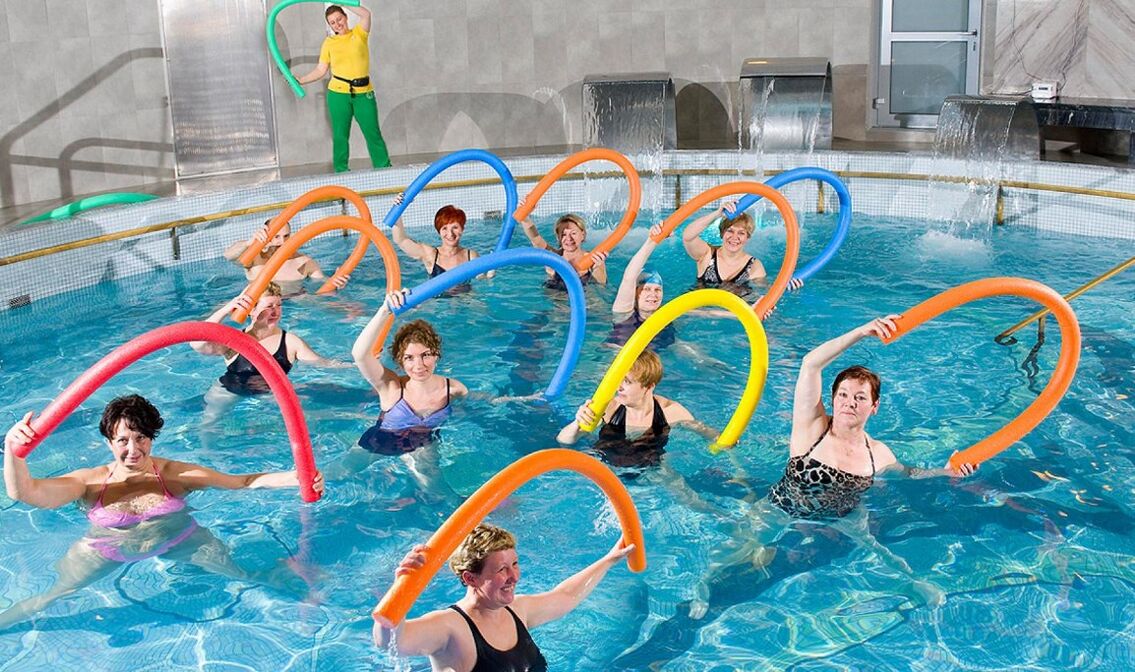
The lumbar spine consists of five vertebral discs that connect the sacrum and the thoracic spine. This part of the musculoskeletal system does the heavy lifting. This is the most mobile and contagious disease, the signs can appear at different ages. One of these diseases is lumbar osteonecrosis. In addition, the patient may have multi-segment osteonecrosis (affecting all parts of the spine). A description of this disease can be found in the International Classification of Diseases - ICD-10, where the generic code M42 is assigned to osteonecrosis.
There are ways to prevent and how to treat not only lumbar osteonecrosis but also polysegmentation (ICD-10 M 42 code).
Signs of osteonecrosis in the lower back
The causes of the development of the disease can be:
- Overload on the lumbar region, sacral spine, typical for manual workers (porters, dock workers, etc. ).
- The patient is too heavy, putting too much pressure on the spine. It is commonly found in both women and men.
- Sedentary, inactive, when blood circulation is poor, disc nutrition with necessary substances and vitamins is lacking.
- Violation of posture due to improper sitting habits, often at home (hump, deviation).
- Injuries while playing sports, exercises performed incorrectly.
- Age factor, when in elderly women and men, bones are easily deformed.
Symptoms of lumbar osteonecrosis
Pain, indicating an urgent need for treatment of osteonecrosis of the lumbar spine (ICD-10 M 42 code), can occur even with sneezing or coughing. Manifestations of pain in the ear can be caused by strong movements, tilting, or shifting of gravity.

The tingling sensation may be localized or radiate upward from the lower back. The pain may also radiate down the buttocks and legs. The patient's back loses flexibility. It is very difficult for a person to perform twisting and leaning movements. General discomfort leading to sleep disturbance, irritability, loss of strength.
As one of the possible complications of the disease - disorders in the genitourinary system. Pain may be present in the kidney area. There may be urinary disturbances.
The treatment
To successfully cure lumbar osteosarcoma (ICD-10 M 42 code), the patient will have to radically modify most of his or her daily routine. From now on, you will need to exercise every day. If it is different, then even in the case of overcoming the symptoms of the disease, it is possible to recur again. Unfortunately, this happens in many cases.
Usually during the first visit, the patient will be prescribed medication. Anti-osteoporosis drugs in the lumbar region help relieve pain, prevent the inflammatory process.
And in folk medicine there are many recipes for infusion, ointments that can help diagnose "osteonecrosis" (lumbar or multisegment, ICD-10 code M 42). Folk medicine is used externally or orally to relieve pain and inflammation.

However, it is known that drug treatment only stops the symptoms of the disease (relieves pain) but is not enough to defeat the disease completely, it does not eliminate the root cause of the disease. For a full course of treatment, complex rehabilitation measures are required. Without them, the treatment would be ineffective and the successes achieved would be short-lived. In some cases, it is possible to use a belt for lumbar osteochondrosis (a corset), you also have to wear a belt at home.
A special place in the treatment of lumbar osteonecrosis (code M 42 according to ICD-10) is occupied by exercise therapy (physical therapy exercises), special gymnastics. An individual set of exercises should be selected by the doctor and the appointment should be made under the guidance of a qualified trainer. In case the patient has obvious overweight, you need to adhere to the diet, as well as increase daily exercise. The combination of these measures can cure osteonecrosis.
It is also recommended to perform acupuncture to treat lumbar spondylosis.
Vitamin therapy for osteonecrosis
To cure the disease, an integrated approach is important. This treatment should include vitamins, which can often be done at home.
Vitamin B
They are prescribed in the early stages of the disease to relieve painful symptoms. Often this is enough to cure osteonecrosis and eliminate pain.

In addition to the fact that B vitamins relieve pain, they can also be used to improve metabolism, restore immunity and sensitivity of tissues affected by the disease. They are used both as injections (intramuscularly or intravenously) and tablets.
Vitamin B is found in:
- B1 (thiamine) - in cereals, bread (raw flour), in yeast;
- B6 (pyridoxine) - in vegetables, eggs, milk, liver, meat, fish;
- B12 (cyanocobalamin) - in animal products: meat, beef liver.
The introduction of B vitamins by injection is quite difficult. However, when it comes to treating lumbar osteonecrosis, they are an excellent foundation for primary drug therapy.
Vitamin D
Doctors recommend using it in combination with calcium, because this combination has a bone-strengthening effect, helping to strengthen bones. But the cartilage of the intervertebral disc, which is largely affected by osteonecrosis, is strengthened with the help of vitamin D. For the most part, to cure the disease, experts will prescribe vitamin D3 (cholecalciferol) or D2 (ergocalciferol).

Vitamin D is found in:
- snow fish;
- halibut;
- Milk;
- yolk;
- butter;
- pilchard;
- tuna liver.
Vitamins A and E
A and E are powerful antioxidants. They catalyze tissue regeneration. For example, vitamin A supports the strengthening of the immune system, actively fights infections, is responsible for the harmonious circulation of calcium, phosphorus and restores damaged tissues.
Vitamins A and E must be consumed "in parallel" - when absorbed from the intestines, their elements complement and activate each other's work. Thanks to them, the symptoms of lumbar osteonecrosis (ICD-10 code M 42) disappear and the disease is not likely to spread further.


Found in animal and plant foods:
- carrots, parsley, spinach, green onions, sea buckthorn, wild rose, apricots, mountain ash, black currant, blueberries, strawberries, blueberries;
- fish oil, liver, milk.
Vitamin C
Vitamin C (ascorbic acid) strengthens the body's defenses. This is essential in the fight against any disease. This vitamin removes toxins, protects cartilage, muscle, bone tissue from harmful agents from inside and outside.
Ascorbic acid is sold in the form of tablets, and in addition, in ampoules for injection (you can also use it at home). It contains pink hips, red (sweet) peppers, peas, strawberries, cabbage (broccoli, white cabbage, Brussels sprouts), needles, tangerines, oranges, tomatoes, parsley, dill.
What gives swimming and exercises for osteonecrosis
Properly organized swimming contributes to:
- Relax. Osteoma of the lower back and multisegment (ICD-10 M code 42) leads to muscle spasms, muscle tension, and motion restriction. Water relaxes the entire spine, eliminates muscle spasms, and at the same time strengthens the muscles.
- Accelerate metabolism. The damaged and normal disc tissues receive the nutrition they need and begin to recover.
- Increase immunity. This is important for the treatment of any disease.
- Regular swimming, bathing, and especially water exercises, help to lose weight.
- Swimming improves the function of the heart and respiratory system, helping to create a positive attitude to healing osteonecrosis.

Aquatic exercises and swimming are recommended for both osteonecrosis (ICD-10 code M 42) and osteonecrosis of any part of the spine.
If while taking vitamins and other drugs you practice swimming and exercise in the pool, then you can cure the affected discs, improve the general condition of the entire spine and get rid of pain.

Doctors recommend treatment only by swimming in special pools. Naturally, such treatment is often not possible at home. But in the river, at sea, exercises are not recommended because the flow of water bodies can put additional stress on the spine.
When exercising in the pool, patients need to follow a few basic rules. Improper swimming and exercise can worsen pain:
- The water temperature should not be lower than 23 degrees, and during the first visits to the pool - at 27 - 30 degrees Celsius.
- Swimming will help cure osteonecrosis, if you warm up well before entering the pool. It can be simple exercises, massage. All of this within minutes will increase blood flow to the spine and prepare it for the procedure.
- Patients diagnosed with "lumbar (or multisegment) osteonecrosis" should avoid sudden movements in the pool.
- You can (recommended) go to the pool at least twice a week, the optimal time for a session is 40-50 minutes.
- Special water exercises, swimming for men as well as women with osteonecrosis, should be recommended by a therapist in therapeutic exercises.
So, if you have signs of osteonecrosis (lumbar or multisegment), then in addition to home treatment (vitamins, drugs), as recommended by your doctor, you should go to the swimming pool or roomdo exercise. Doctors emphasize that only a combination method, patience and perseverance to overcome the disease can achieve positive results in the treatment process.
























